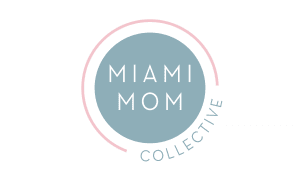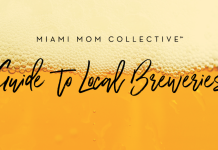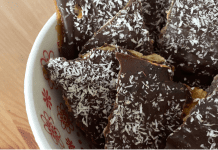One of my darling topics is food safety. As a certified ServSafe instructor as part of my adjunct professor gig, I’m now uniquely qualified/terrified about food safety. (As if I wasn’t enough before, as a dietitian with a hefty amount of food science training.)
While food hazards and risks don’t ALWAYS lead to foodborne illness (phew, yay for immune systems), they certainly are something to think about in your own kitchen and as you dine out/travel.
For a comprehensive list of guidelines, I would definitely recommend taking the ServSafe course or referring to guidelines set by the CDC and the Florida Department of Health. You can also look up any eatery via the Department of Health and see their historic infractions. (You better believe I scour these for every eatery/caterer with whom I dine!)
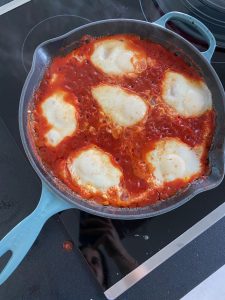
Here are my top food safety tips to keep you and your family safe:
Live outside of the danger zone.
Temperatures between 40 and 135 degrees Fahrenheit can harbor a lot of microbial growth; that’s why refrigerators are usually set at 36-38 degrees. Note that super hot foods placed in a fridge can raise the temperature of the whole fridge/foods around it. It’s best to let foods cool (within an hour or two, depending on the food) before you place them with their chilled friends in the fridge. Hot foods should be kept hot for serving, and cold foods should be kept cold.
The GENERAL rule is that foods can be left out at ROOM TEMPERATURE (note: not in your Miami purse) for TWO hours for safe consumption. Some foods have more of a ‘life’ outside of a temperature-controlled environment. This isn’t limited to dairy! It’s any food that is already cooked or requires refrigeration/freezing. Imagine my heart attack when I learned that some clients/family members casually leave rice out all day.
Note: “Room temperature” is defined as a maximum of 72 degrees. Besides in overly air-conditioned commercial buildings, you’ll be hard-pressed to find this temperature outside or in most buildings, which means we are uniquely predisposed to foodborne illness, as a lot of food safety guidelines assume cooler temperatures in a room than 72.
Invest in a meat thermometer.
There is a whole set of numbers and readings depending on the type/cut of meat/poultry/fish you are preparing. And it’s annoying to interrupt your cooking and cut all your meat 800 times. A meat thermometer inserted into the thickest part of the flesh can cut down on a lot of… cuts.
Wash. Your. Hands.
MANY illnesses, foodborne or otherwise, can be prevented by washing your hands before, during, and after meal preparation. Obviously, washing your hands with soap and water for at least TWENTY seconds is required after handling raw eggs, meat, fish, seafood, and poultry. Also – replace that dish towel every few days by the sink. I actually wear gloves to handle raw flesh, and I still wash my hands after. Any food service operator handling ready-to-eat foods should also be wearing gloves, by the way!

Never thaw meat on the counter.
You can either thaw it in the fridge or in a CONTINUOUS lukewarm water bath but it has to be thawed within a very meticulous set of rules per weight. Honestly, it’s better to just have the forethought to thaw meats, etc. in the fridge.
Keep raw and cooked foods separate.
No chopping/opening/preparing raw eggs, meat, fish, seafood, and poultry *anywhere near* ready-to-eat items like fruits and vegetables. Ice crystals and liquids from these packages can FLY. Use completely separate cutting tools and boards for these items. A good idea is to color code them so they really never even come into contact.
Wash and sanitize surfaces after every meal preparation/meal.
No, a wet napkin doesn’t cut it. Use soap and water, and then a disinfectant spray.
Drip dry.
We don’t recommend drying clean cutlery, pots, pans, plates, etc. with a towel. Leave them open to dry in the open air on a clean surface and then store them.
And keep the drip to your coffee.
Keep raw fruits and vegetables/ready-to-eat foods on top of your fridge/freezer so potential drippings from raw meats/poultry/fish can’t splash down into them.
When in doubt, throw it out.
If it looks odd, is a dented can, an opened seal, smells off – just throw it out.
Use the FIFO method.
This means whatever was opened first gets used first (first in, first out!) Keep a marker handy in your kitchen so you can label and date things according to when you opened them so you’re not trying to recall solely with your nose.
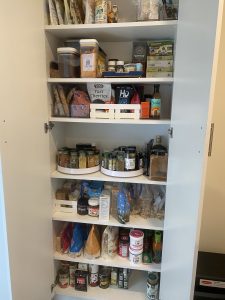
Don’t eat raw dough/flour.
Raw eggs aren’t the only carriers of salmonella. Raw flour can contain it, too! Sorry – no licking the cookie batter bowl.
Avoid high-risk foods.
Any food can become a vector for illness, but the ones with the biggest track record tend to be lettuces grown in California, sprouts, raw oysters, undercooked/raw eggs (including Hollandaise and Caesar dressing), raw seafood and sushi, undercooked meats, and though I love shopping local – a summer farmer’s market in Miami probably isn’t the safest food choice unless very strict temperature control protocols are in place.
The 3-day maximum stay.
Leftovers and houseguests have a maximum stay in the fridge/in your house of 3 days. I said what I said!
There are quite a lot more food safety rules and protocols you should follow in your own kitchen, and that restaurants, bars, and eateries are *supposed* to follow. To learn more, consult a registered dietitian who specializes in food safety (hi!) to keep you and your family safe, as well as the CDC and Florida Department of Health.
